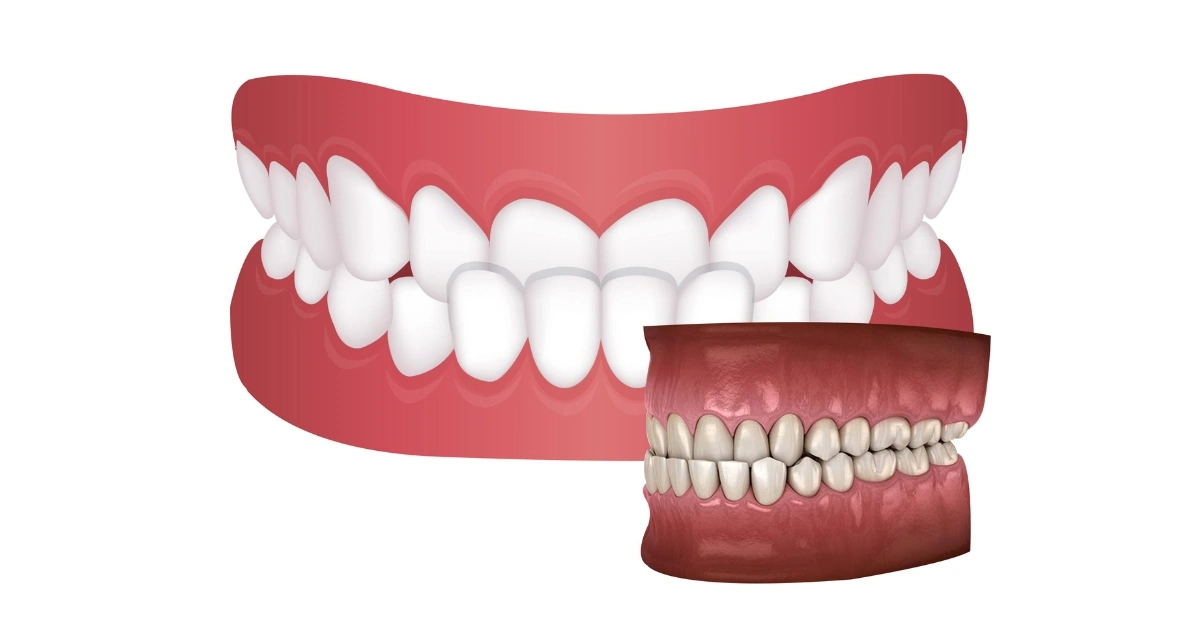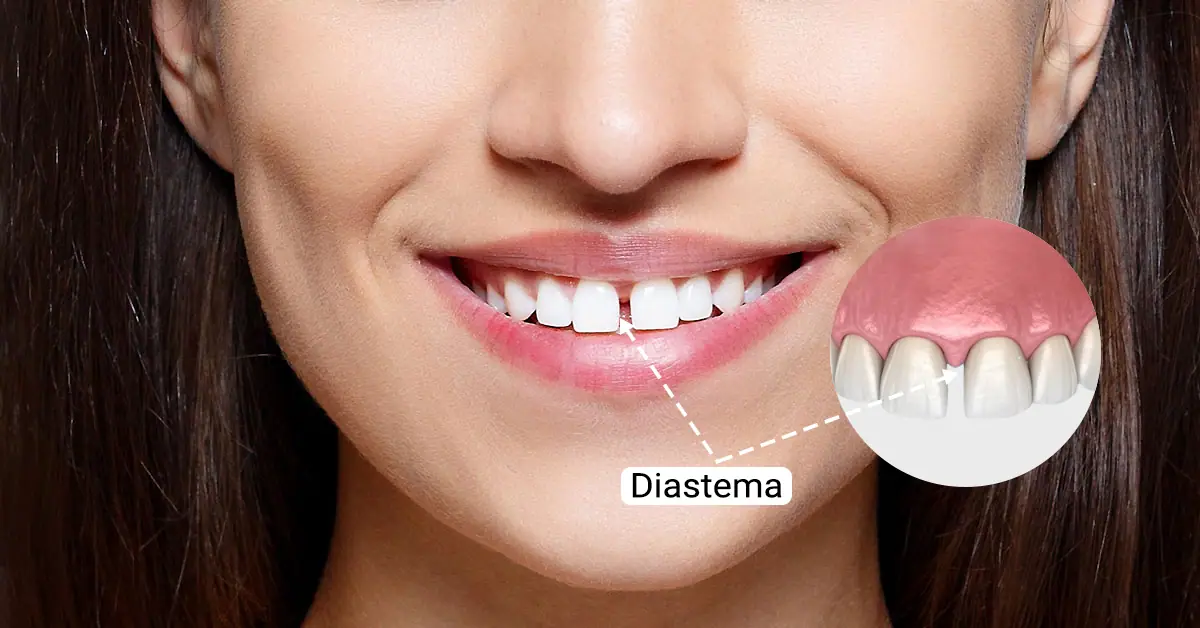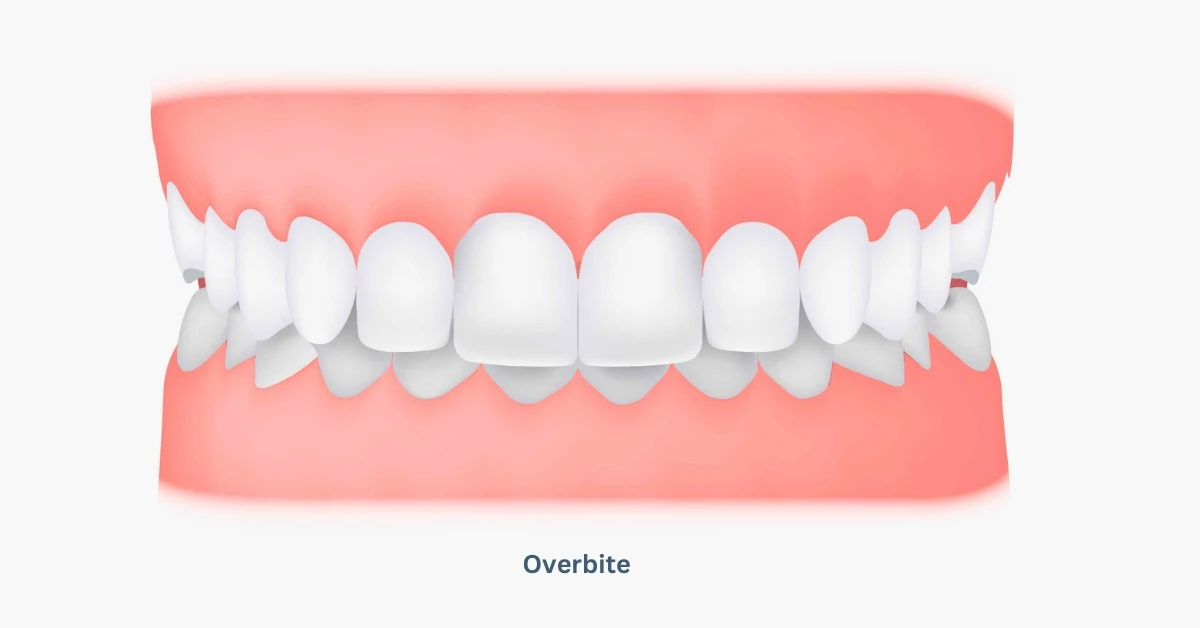A beautiful smile is the first and foremost thing to catch attention while you’re communicating with someone. A smile is not just about aesthetics; it also indicates a person’s overall health.
Two common types of malocclusion that occur as a result of jaw misalignment are overbite and overjet, which predominantly affect your smile. While both cause a misshapen jawline, they are uniquely different and affect your speech, smile, chewing, and other activities that demand orthodontic treatment.
As an important fact, it is possible to have both an overbite and an overjet at the same time.
What is Overjet?
An overjet is a malocclusion or dental misalignment which is very typical in nature. It happens where the upper section of your teeth creates a horizontal overlap or extends far beyond from the lower section.
Similar to overbite, this condition affects the aesthetics of your smile, and also makes chewing, speaking, and other oral functions difficult. Due to overjet it may be hard to fully close your lips due to the angle of the teeth. This condition is commonly known as buck teeth or horizontal misalignment.
What is Overbite?
An overbite occurs when the upper teeth overlap by more than 3 millimeters over the lower teeth. In this condition, the teeth may wear down due to constant impact against each other. Also, discomfort from jaw pain, speech problems, and even sleep apnea are common in this teeth misalignment.
In severe cases, incorrect positioning may cause teeth to knock against each other and damage the enamel and gums. Overbite refers to vertical misalignment and is also known as deep bite.
Key Differences Between Overjet and Overbite
- Although an overbite and an overjet may appear the same, their main difference lies in the angle at which the upper teeth sit.
- An overbite is a vertical misalignment, while an overjet is a horizontal misalignment.
- With an overbite, the upper teeth point straight downwards while extending diagonally against the lower teeth in an overjet.
Overjet vs Overbite: Full Comparison
Causes
- Hereditary factor: When dental misalignments are inherited genetically, or in simpler words, passed on by parents or grandparents, a person can have an overbite or overjet. This is the most common cause of these malocclusions.
- Jaw Misalignment: Misaligned or underdeveloped jaw bones cause an overjet or overbite.
- Dental and Skeletal Components: In many cases, the cause of overbites and/or overjets is a mismatch in the shape and size of the jaws and teeth. Skeletal issues such as mismatched jaw sizes or dental issues (such as missing teeth or the abnormal position of the teeth) can lead to these bite problems.
- Childhood or other Habits: Childhood habits play a crucial role when your oral environment, including teeth, gums, and jaw bones, is in a developing stage. Habits such as thumb-sucking, thrusting against the teeth with the tongue, prolonged use of a pacifier or bottle that pushes forward the upper section of teeth, or even nail-biting can cause an overbite, overjet, or even both.
- Tooth loss: Early baby tooth loss or late retained baby teeth lead to a change in the position of erupting permanent teeth and can cause malocclusion or misalignment.
- Bruxism: Teeth grinding or bruxism is also another factor causing misalignments.
Effects on Dental Health and Other Function
- Difficulty in chewing food
- Speech impairments such as lisps
- Such issues can be an aesthetic concern for patients
- Damage to enamel and gums
- Medical conditions like experiencing jaw pain and stiffness, mild to severe headaches, earaches, neck pain etc.
- Poor oral hygiene because of fewer scopes of cleaning and flossing
Diagnosis and Assessment
The sooner your treatment begins for malocclusions, the better the outcome will be. At the initial consultation, the dentist primarily checks for the severity of the condition, in addition to the patient’s other orthodontic needs, through a dental exam.
Also, X-rays need to be taken to visualize your jaw and teeth. This is especially important in children if their permanent teeth have not yet erupted.
An overjet is typically a bit more challenging to treat than an overbite, but both conditions are usually treatable in most cases. The final decision on treatment will be made after these assessments.
Treatment Options
Treatment using braces: Braces are a common treatment option for overjets, overbites, and other orthodontic issues. Suitable for all ages, braces can correct severe bite issues and are affordable, involving over 2-3 years or more.
Treatment using clear aligners: Clear aligners are very effective in correcting malocclusions such as overbite and overjet. These customized dental trays fit over the teeth and help move them to the correct position. The primary advantages of clear aligners are that they appear nearly invisible when in the mouth and can be removed for eating, brushing, and flossing. For the best results, the trays must be worn at least 22 hours daily.
Surgical treatment: Orthognathic surgery is the medical term for corrective jaw surgery and is usually the last resort when treating severe bite issues. This type of surgery is expensive and complicated; addressing bite issues during childhood or early adolescence is advised. Early intervention can decrease the chances of surgery being needed later.
Treatment Cost
On average, orthodontic treatment can cost anywhere from 20,000 to 1,00,000 rupees. The price of treatment of overbites and overjets in India goes up to Rs. 2 lakhs or more depending upon the type of treatment, the severity of the condition, the location of the clinic, etc. You can check our website for various orthodontic treatments.
Prevention and Management
Preventing an overbite or overjet can be challenging, as both often result from genetic and growth factors that are beyond anyone’s control.
However, certain things can be done to reduce your risk of developing an overbite and overjet or minimize the severity.
- Avoid excessive thumb-sucking, pacifier use, and prolonged bottle feeding in children after age 3.
- Don’t grind or clench your teeth, especially at night. This can be checked with a night guard or other treatments.
- Don’t use your teeth as tools, such as biting your nails or opening packages with your teeth.
- Regularly floss, brush your teeth, and visit your dentist for cleanings and examinations.
- Limit or avoid sugary and acidic foods and drinks.
- Wear a mouthguard while participating in sports or other high-impact activities.
Consult an orthodontist or dentist if you notice any changes in your bite or teeth alignment.
Do overjet and overbite require treatment?
Malocclusions like overjet and overbite require treatment as they can affect a patient’s physical and mental health in a negative way. There are several risk factors associated with these kind of misalignments, which are:
- Pain and discomfort in the jaw, neck, and face
- Tooth sensitivity and damage
- Difficulty speaking, eating, and swallowing
- Psychological and emotional impact from self-consciousness about appearance
- Jaw joint problems (TMJ)
- Temporomandibular Joint Disorder (TMD)
- Increased chance of dental decay and gum disease
- Speech impediments
Untreated overbite and overjet issues worsen over time while an early and timely medical intervention can solve these dental misalignments for lifelong.
Final Verdict
There are distinct differences between an overjet vs an overbite. The cause of the confusion is that both terms refer to a bite problem in which the upper teeth sit over or in front of the lower teeth. However, we must look closer to understanding what makes overjet teeth vs. overbite teeth.
Correcting these dental misalignments requires a modern orthodontic approach with convenient solutions like clear aligners. Contact a well-equipped dental clinic near you to consult an orthodontist without wasting your time.
FAQs
An overjet is measured from the facial surface of the most lingual mandibular tooth to the middle of the incisal edge of the more facially positioned maxillary tooth.
An overbite is measured between the edge of the uppermost vertically erupted middle incisor and the corresponding incisal edge of the opposite mandibular tooth perpendicular to the occlusal plane.
Treating an overbite without braces is possible with clear aligners or by performing surgeries.
You cannot fix overbite naturally. Braces, aligners or surgery will be needed to correct an overbite. However, you can prevent some cases when you cure some childhood habits like thumb sucking, pencil chewing, overusing pacifiers etc.
A normal overbite has a minimal distance of 2 mm between the upper and lower molars. An overjet has a horizontal space of not more than 3-4 mm.
An overbite is a vertical misalignment, while an overjet is a horizontal misalignment. With an overbite, the upper teeth point straight downwards, while they stick out diagonally against the lower teeth in an overjet. However, it is possible to have both an overbite and an overjet simultaneously.
Clear aligners work wonders in treating overbites by moving the teeth. Treatment time can be around 12 to 24 months, depending on your case.
Clear aligners are the most suitable orthodontic solution for curing an overbite without involving any loss of blood or tissue. The treatment approach is even faster than traditional braces and much more comfortable.
Anyone experiencing the risk factors of an overbite should seek professional dental care for treatment. Treatment for overbite can help children, teenagers, and adults alike.
Correcting the overbite and overjet helps align the teeth properly, making daily oral hygiene routines more effective and reducing the likelihood of dental issues. An untreated overbite can prevent effective chewing, as the misalignment may not allow the upper and lower teeth to come together correctly.
Overjet and overbite cause teeth to wear down more quickly. In these cases, the teeth grind against each other, causing tooth enamel to wear down faster than is normal. Enamel erosion leads to an increased risk of tooth decay and tooth sensitivity.







